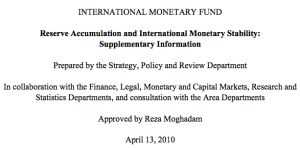
HOW DOES TODAY’S INTERNATIONAL MONETARY STABILITY COMPARE TO PREVIOUS ERAS AND SYSTEMS?
Overview
1. Gold standard. The modern history of the IMS starts with the shift from a bimetallic system to the Gold Standard in the 1870s and 1880s (Ghosh and others, 2002, McKinnon, 1996). Under the Gold Standard, the major national currencies were freely convertible to gold at a fixed exchange rate, with adjustment largely undertaken through flexible prices, wages and income. This system survived up to the outbreak of the First World War, and while it was subsequently re-established in a modified form following a painful period of post-war disinflation, the economic and political strains of the Great Depression led to the system’s ultimate collapse in the 1930s.
2. From fixed to floating. Negotiations between the U.K. and U.S. in the 1940s led to the post war emergence of the Bretton Woods system of fixed and adjustable exchange rates
tied to the dollar, with the dollar fixed to gold and the IMF established to oversee the system. However, this system too faced repeated strains, and with the dollar’s link to gold broken and most major currencies floating in the early 1970s, the current arrangements centered on floating currencies were born. The U.S. dollar remained the key reserve currency in the new system, with U.S. Treasury Bills the major reserve asset.
Continue reading International Monetary Fund

